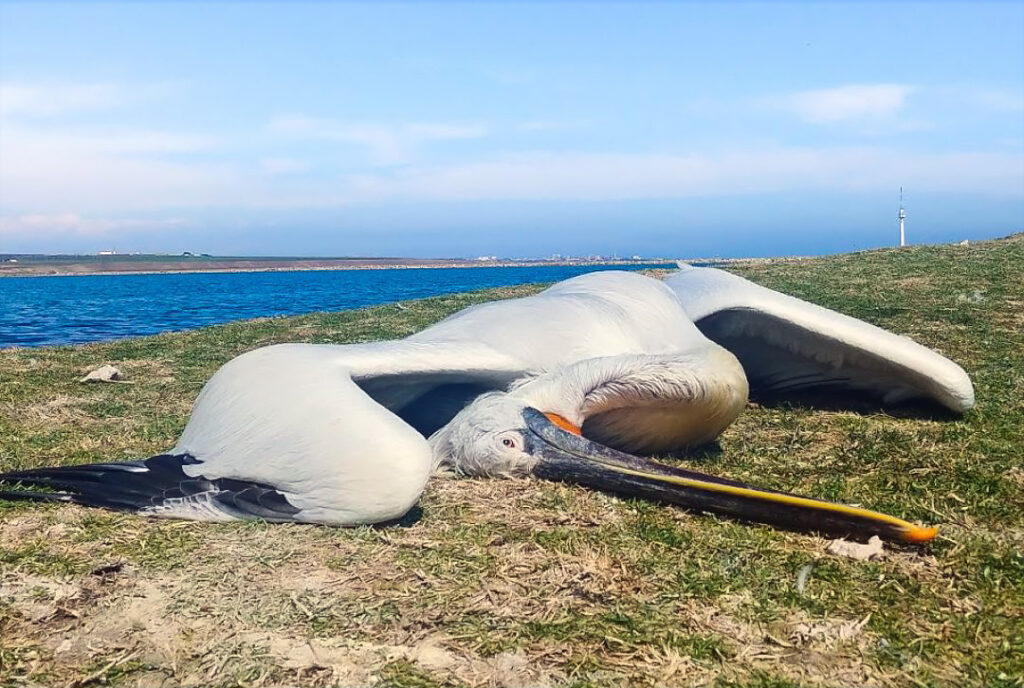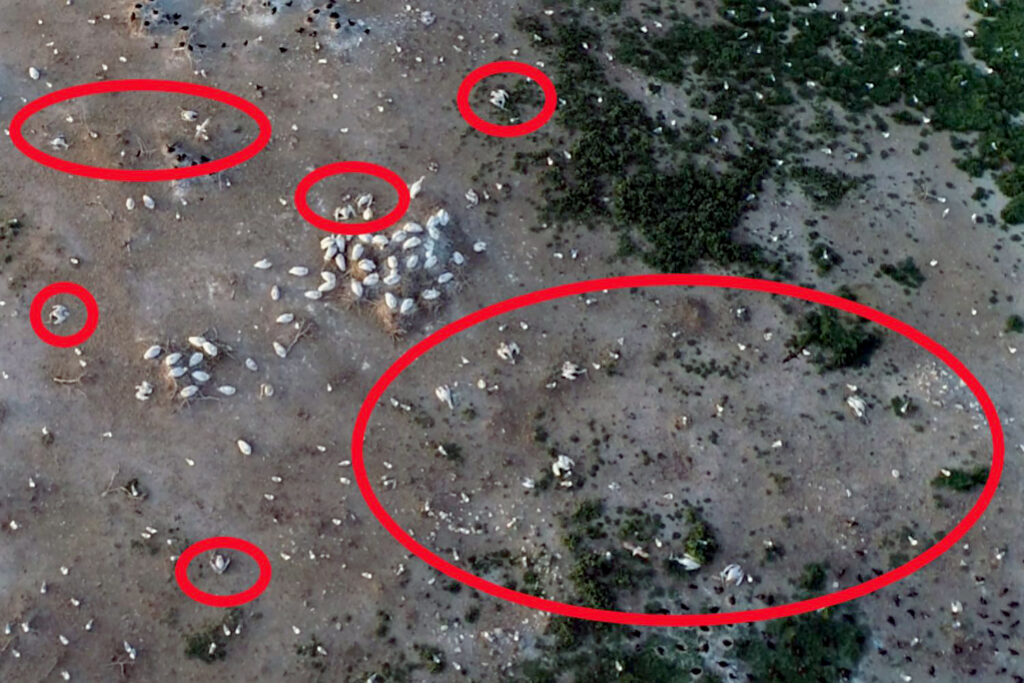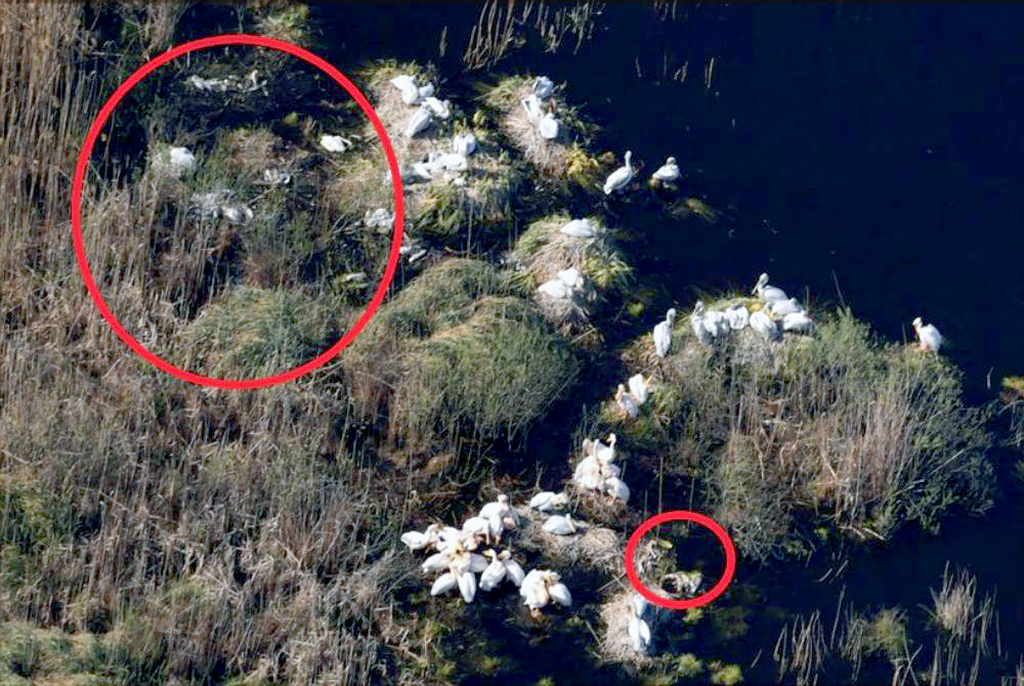The total population of the Dalmatian pelican in Romania was severely affected by an epidemic of bird flu, at the beginning of this year’s nesting season. Moreover, the disease has caused mass mortality among pelicans in several areas of the Balkans. Greece, for example, has lost almost 40% of its total population of Dalmatian pelican, and cases of high mortality have also been recorded in Albania, as well as in Montenegro.

In Romania, the mortality cases were detected during monitoring visits in mid-March, which the Romanian Ornithological Society (SOR) carried out in the area of the colony on Lake Tașaul. At the same time, the staff of the Danube Delta Biosphere Reserve Administration (ARBDD) reported similar cases of mass mortality of Dalmatian pelicans in the colonies on Lake Sinoie. All cases were communicated by both the SOR and the ARBDD to the Constanța Veterinary Health and Food Safety Directorate (DSVSA). Samples were taken from the Sinoie Lake area and, at the same time, the corpses were removed from the islands with the colonies, establishing quarantine measures.

Joint efforts in the face of disease
During the months of April, May and June, SOR monitored the bird flu epidemic and recorded the mortality cases both in the colony on Lake Tașaul and in the other colonies on the territory of the Danube Delta Biosphere Reserve, some of which were exclusively monitored from the air. During these months, SOR collaborated with competent institutions, mainly with DSVSA Constanța, ARBDD and the National Agency of Natural Protected Areas Constanța.
From the beginning of the epidemic until now, the total number of adult birds that have died in the colonies amounts to 158, a figure that represents almost a fifth of the nesting adults in the Romanian colonies. Most of these, which is 98 cases, were confirmed in the colonies located on Lake Sinoie, and 24 were recorded on Lake Tașaul. The rest of the bodies were observed from the air in the inaccessible colonies of the Danube Delta Reserve, especially on Lake Lejai. Most of the corpses were observed in March and April. In May a very small number of cases was registered, namely only three individuals. So, as expected, as the average temperature increased, the number of mortality cases decreased.
The breeding population affected by avian influenza
In addition to the losses due to direct mortality, the population was also impacted by the considerable reduction in the number of nesting pairs and reproductive success during this season. Thus, the nesting population of the Dalmatian pelican in Romania decreased by approximately 20%.
“The Dalmatian pelican is a really conservation-dependent species, and support of the colony growth is one of the most important. The species is vulnerable to epidemics of this kind. Any unexpected reduction in the number of individuals can have a strong effect on the population as a whole”, stated the coordinator from the SOR of the activities within the “Pelican way of LIFE” initiative, biologist Sebastian Bugariu.

The worst epidemic so far
The bird flu epidemic that has affected the Dalmatian pelicans this season is the worst so far, surpassing the one in 2015. At a first estimate, almost 10% of the global Dalmatian pelican population died this season because of the bird flu. After Greece, Romania was the country with the highest number of Dalmatian pelicans’ deaths.
This year’s epidemic, which occurred throughout the Balkan region, caused the species population of Greece, in particular, to be severely affected. According to information received from the Hellenic Ornithological Society, which closely monitored the phenomenon, more than 1,700 birds died in the largest pelican colony during the season. The mortality was also recorded in the other Greek colonies. In total, in Greece, this season’s bird flu killed almost 40% of the total population of the Dalmatian pelican (over 2,200). In addition, cases have also been reported in Albania and Montenegro. The bird flu epidemic has been reported since the second part of the last year, affecting significant numbers of individuals in other species as well (for example several thousand roosters in Israel at the end of last year).
The 2022 epidemic is unprecedented in both impact and duration, as it continues to take its toll on various populations of colonial waterfowl species. Mass mortality of several thousand seabirds of various marine species has recently been reported in the UK islands.